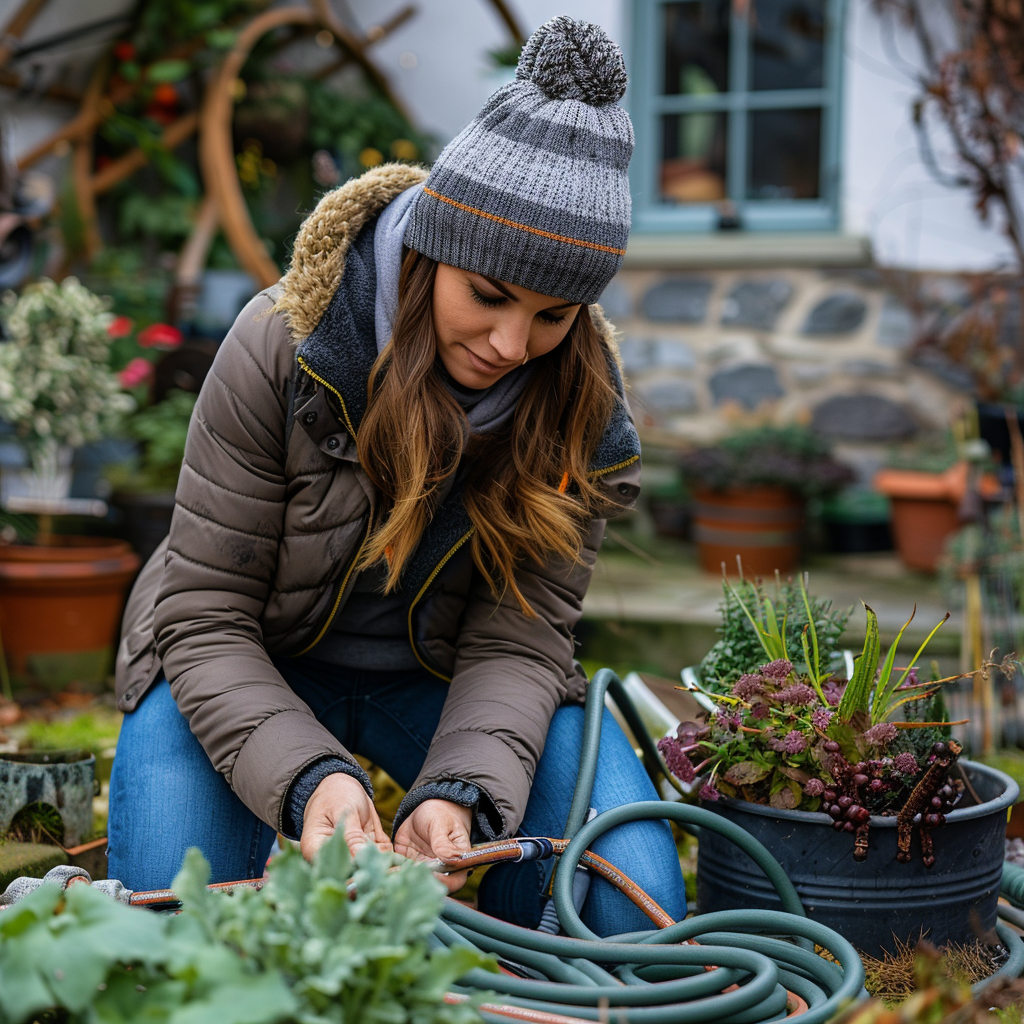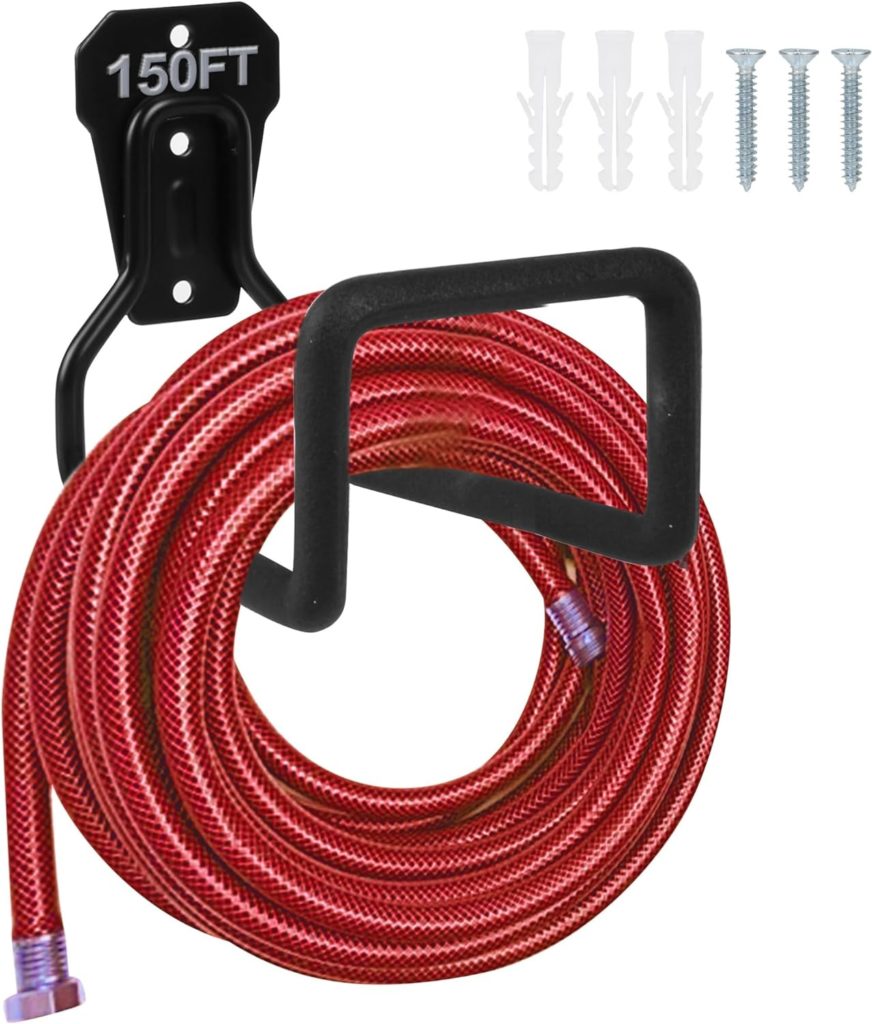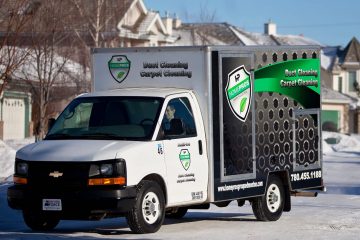As the fall season approaches, it’s crucial to start thinking about how to protect your outdoor equipment from the colder months ahead. One often overlooked task that should be high on your Ready For Fall Checklist is to drain and store hoses properly. This simple step can save you from unnecessary damage, prolong the life of your hoses, and help you avoid costly repairs. Let’s explore why it’s so important and how to do it right.
Why You Should Drain And Store Hoses Before Fall
When temperatures drop, any water left inside your garden hoses can freeze and expand, leading to cracks, bursts, or leaks. Moreover, hoses that remain attached to outdoor faucets can cause freeze damage to both the hose and the faucet. By taking the time to drain and store hoses properly, you not only prevent damage but also ensure that your hoses are in good condition for the next season. This small action can make a big difference in maintaining your garden tools.
How to Properly Drain And Store Hoses
To keep your hoses in the best shape possible, follow these straightforward steps:
- Disconnect Hoses from Faucets: First, unscrew all hoses from their outdoor faucets. This prevents water from getting trapped inside, which is the main cause of freezing damage.
- Drain Remaining Water: Next, lift one end of the hose and walk its length, guiding the water out from one end to the other. Make sure you get all the water out, as even a small amount can freeze and cause damage.
- Coil and Store Hoses Properly: Once drained, loosely coil your hoses to prevent kinks and tangles. Store them in a dry, sheltered location, such as a garage, shed, or basement. This will protect them from freezing temperatures and prolong their lifespan.
- Inspect and Clean Hose Accessories: Don’t forget to check for any damage to nozzles, connectors, or other accessories. Clean them thoroughly before storage to ensure they are ready for use next season.
Step-by-Step Guide to Drain And Store Hoses
- Disconnect All Hoses: Begin by unscrewing each hose from its faucet. Make sure every hose is detached to prevent water from freezing inside and causing bursts.
- Drain Water Thoroughly: Hold one end of the hose high and walk along its length, squeezing or guiding out all the remaining water. Be thorough, as even a small amount of trapped water can freeze and crack the hose.
- Coil Hoses Loosely: Coil the hose in large, loose loops to prevent any kinks or tangles. Avoid wrapping the hose too tightly, which could lead to cracks or permanent bends.
- Store in a Dry Place: Find a dry spot, like a garage, shed, or basement, where your hoses can be protected from freezing temperatures. Keeping them in a sheltered location ensures they remain flexible and intact for the next gardening season.
Additional Tips for Your Hoses in Your Ready For Fall Checklist
- Use Hose Hangers: Consider storing hoses on a hanger to prevent tangling and keep them off the ground. This will also help them dry out completely and avoid mould or mildew buildup.
- Check for Damage: While draining and coiling, take a moment to inspect hoses for cracks, leaks, or wear. It’s easier to repair or replace them now rather than deal with issues when you need them most.
- Cover Outdoor Faucets: Don’t forget to cover outdoor faucets with insulated covers to protect them from freezing temperatures. This extra step adds another layer of protection against winter damage.
Common Mistakes to Avoid
- Leaving Hoses Attached to Outdoor Faucets: One of the biggest mistakes is forgetting to disconnect hoses from outdoor faucets. This can cause water to remain trapped in both the hose and the faucet, leading to potential freeze damage that could burst pipes and create leaks.
- Not Draining All Water: It’s easy to think that a little bit of water won’t cause any harm, but even small amounts can freeze and expand, leading to cracks in the hose. Always make sure to drain every drop of water by walking the length of the hose from one end to the other.
- Storing Hoses in a Freezing Location: Storing hoses outside or in an unheated area where temperatures drop below freezing can shorten their lifespan. Instead, store them in a garage, shed, or basement where they’ll be protected from harsh winter conditions.
- Improper Coiling: Coiling hoses too tightly can cause kinks and stress points that weaken the material over time. Instead, coil hoses loosely and use hose hangers to keep them in good shape.
Prevent Damage and Save Money
Taking the time to properly drain and store hoses is a simple yet crucial step in your Ready For Fall Checklist. By doing so, you protect your garden equipment from freezing damage, extend the life of your hoses, and save money on potential replacements or repairs. Don’t overlook this easy task—get ahead of the season by draining and storing your hoses today, so you’re ready to enjoy them again when warmer weather returns.





